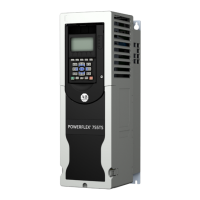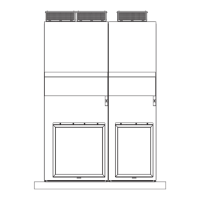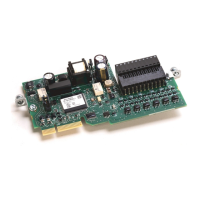244 Rockwell Automation Publication MOTION-UM003K-EN-P - January 2019
Chapter 11 Commission an Axis
• Automatically adjust torque loop notch and low pass filter parameters to
suppress resonance
• Automatically de-tune control loop gains to avoid instability when it is
detected
For detailed tuning information, see the Motion System Tuning Application
Te c hn iq u e , pu b l i c a ti o n MOTION-AT005
.
Benefits of Adaptive Tuning
When Adaptive Tuning is enabled with recommended out-of-box control loop
settings, Adaptive Tuning performs the following:
• Automatically suppresses changing resonances
• Minimizes periodic identification of resonance and retuning
• Mitigates the need for a tuning expert
• Reduces decommissioning time, especially for high axis count
• Minimizes the power consumption, machine vibration, and errors
How Adaptive Tuning Functions
Adaptive Tuning is always running in the background to detect motor side
resonances. Every few seconds, Adaptive Tuning analyzes the frequency
response of torque loop signals to identify, track, and measure resonances.
Adaptive Tuning also analyzes the frequency response of the command signal
to make sure that dominant command frequencies are not mistaken for
resonances. This process is known as command rejection. The action that is
taken to change tuning parameters largely depends on the adaptive tuning
mode of operation. Relevant parameters are summarized in the table followed
by detailed descriptions of how they work in various modes of operation.
Table 51 - Adaptive Tuning Attributes
Parameter Name Description Default Value Range/Units
Torque Notch Filter
Low Frequency Limit
Adaptive Tuning identifies resonances that are not associated with the
command between these low and high frequency limits with
magnitudes above this tuning threshold.
Torque Loop
Bw
20…2000 Hz
Torque Notch Filter
High Frequency Limit
2000 20…2000 Hz
Torque Notch Filter
Tuning Threshold
5 0…100% of motor rated torque
Torque Notch Filter
Frequency Estimate
Adaptive Tuning sets this frequency estimate equal to the center
frequency of the identified resonance with the highest magnitude.
Torque Notch Filter Frequency or 0
when disabled
20…2000 Hz
Torque Notch Filter
Magnitude Estimate
Adaptive Tuning sets this magnitude estimate equal to the magnitude
of the identified resonance with the highest magnitude.
0 0…100% of motor rated torque

